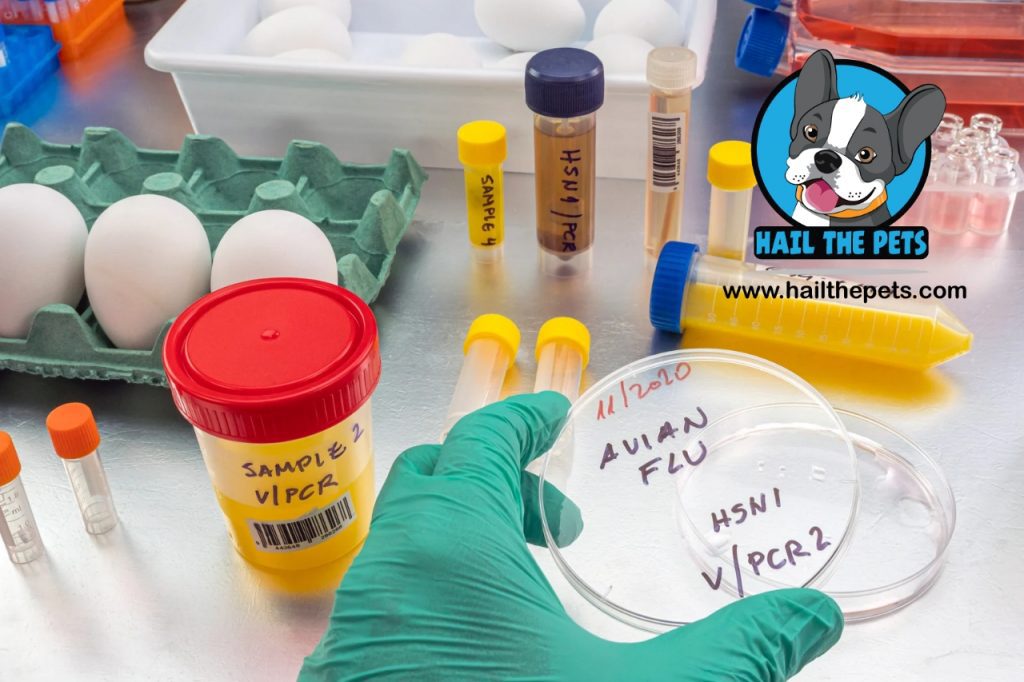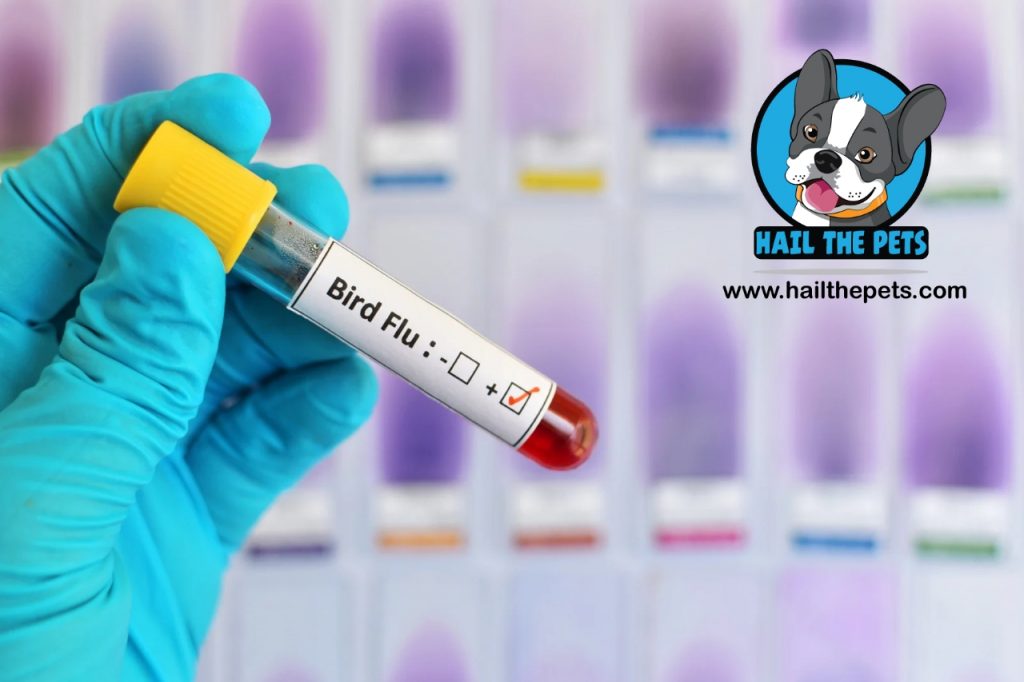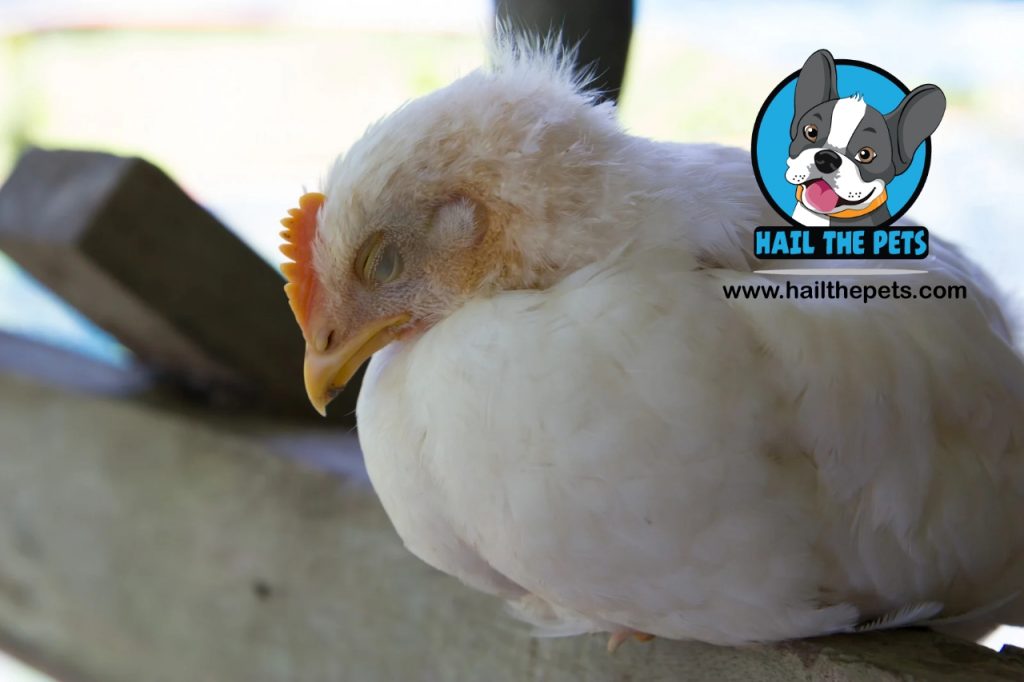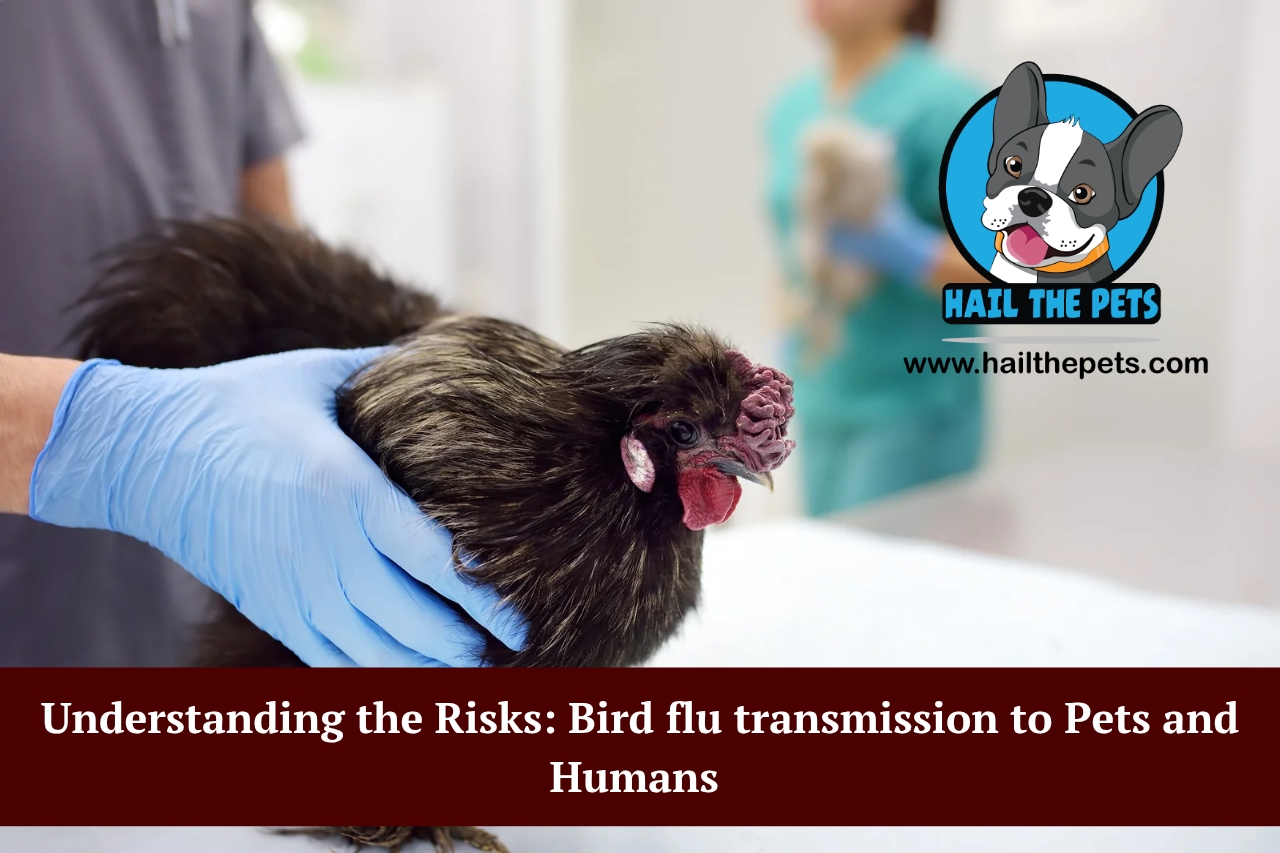The previous winter, Sara entered her kitchen to discover her cat, Luna, sniffing a raw chicken package that had been left on the counter. It looked harmless at first. But subsequently during the week, when there were reports of a local outbreak of bird flu transmission to pets, Sara was alarmed. Would Luna catch anything from it?
Could she, the owner, be affected as well? These are no longer fantasies. With increasing cases of avian influenza all over the world, the lines are being drawn between human beings, domesticated animals, and wild birds. And that is where the actual threat lies.
The World Health Organization has recently authenticated isolated cases of human cases of bird flu 2025 in several countries, creating alarm among pet owners as well as health experts. With infections now spilling over into cats and dogs, it is time we take a closer look at the unseen danger sitting at the crossroads of our homes and our pets.
Read more: 10 Best Birds for Apartment Living – December 2024
What Makes Bird Flu Transmission to Pets So Concerning?
The concept itself rings ominous. Pets are members of our families, and that they are now susceptible to viruses previously found only in birds makes an additional frightening dimension. When bird flu transmission to pets occurs, the threat doesn’t end with animals.
Bird flu transmission to pets has the potential to be a bridge linking poultry outbreaks to humans such that viruses like H5N1 infections in dogs and cats have the potential to spread undetected.
Read more: Bird flu
In plain words, your cat running after pigeons in the park or your dog smelling around dead birds may become a health threat to all members of the household. Chilling? Yes. But purely real.

H5N1 Infections in Cats and Dogs
So, how do cats and dogs become infected? As opposed to chickens that become sick immediately, cats and dogs are not the natural reservoir of H5N1. However, they can contract it upon contact with sick wild birds, polluted environments, or consumption of raw poultry.
Consider a scenario in Poland in 2023, when scores of cats died after being exposed to H5N1 illnesses in cats and canines via infected raw meat. This incident confirmed that our pets are not as safe as we previously believed.
Read more: Seeds vs Pellets: What to Feed Your Bird – May 2025
Picture your furry pet dog wagging its tail in glee after it caught an ailing pigeon in the garden. What appears to be normal animal instinct can subject them to a deadly virus that is trending on a global scale. And to make matters worse, they can transmit it to other animals or even to humans.
Preventing Avian Influenza Transmission To Mammals
How can we stop the chain reaction? The key lies in preventing avian influenza spread to mammals before it even begins. That means monitoring not only poultry but also keeping a close eye on pets.
Vets worldwide now recommend simple but strict precautions. Keep animals indoors during outbreaks. Refrain from letting them stray in the vicinity of poultry farms or wet markets. Let their paws be washed upon return from outdoor walks.
Read more: 10 Best Birds for Apartment Living – December 2024
Even minimal measures such as refraining from giving pets raw poultry can help a lot in the prevention of avian influenza transmission to mammals.
Human Cases Of Bird Flu 2025
What about us? The sudden surge in human cases of bird flu 2025 has sent health officials into a state of high alert. These are not mass cases, but the fact that they exist verifies one thing: the virus is evolving.
From Asia to Europe, isolated cases of infection have been confirmed. Each new case is a reminder that the disease is insidiously entering our lives. For the masses, it means being more vigilant in handling pets, fowl, and even the environment.
Let us not forget history. Ten years ago in 1997, Hong Kong saw the first severe avian flu outbreak of H5N1 in humans with fatalities which shook the globe. In advance of the current time, the stakes are even higher because of the level of interaction among pets, birds, and humans.
Safety Measures For Pet Owners During Avian Flu Outbreaks
So, what do pet owners do then? The answer lies in adhering to rigorous safety protocols for pet owners in avian flu epidemics.
Suppose a situation. An Istanbul woman noticed her Labrador smelling over a dead crow outside her garden. She did not just ignore it, but rather called animal control, cleaned her shoes, and got her pet thoroughly cleaned. That minor act possibly could have kept her and her pet safe from exposure.
Read more: Bird flu: how to keep pets safe
When outbreaks happen, veterinarians advise minimizing the number of outings done by dogs and cats, particularly in areas where birds are present. Switch food sources if you depend on raw meat. Sterilize litter boxes with your hands, and then wash them thoroughly after touching animals. These easy but essential pet owner precautions during bird flu outbreaks will significantly lower risks.

Symptoms Of Bird Flu in Humans
But how would you know if a person becomes ill? The first line of defense is spotting the symptoms of bird flu in human beings.
Classic symptoms appear innocuously like regular flu, cough, sore throat, fever. But the illness spirals rapidly into pneumonia, breathing trouble, and potentially organ failure. Consider a person ignoring their “plain flu” after working with chicken, only to find themselves in an ICU within a matter of days. That’s how lethal it can be.
Read more: Top 10 Pet Bird Species for Beginners: Easy to Care for and Friendly
Be aware of the facts. If you find yourself in an outbreak zone and suddenly get flu-like symptoms after being around birds or pets, seek medical help immediately. Don’t assume it’s just a cold. That prompt treatment can make a huge difference in recovering. They have special tests at hospitals that they can perform in order to see if it is the seasonal flu or avian flu. Waiting for that checkup may let the virus infect deeper into the lungs before the doctors can cure it.
Dealing with Poultry Products Properly
Aside from pets and people, kitchens can also be unsafe. Safe handling poultry products is necessary in every home.
A common mistake is leaving raw chicken uncovered on counters, just like Sara did in our opening story. This encourages infection, especially when pets sniff about. Always completely cook chicken, clean cutting boards with hot water, and avoid cross contamination between raw meat and ready to eat meals.
Read more: A Complete Guide on Lovebirds
Health specialists highlight that safe chicken handling is about prevention, not paranoia. Indeed, one moment of carelessness in food hygiene can become the point of entry for a virus that feasts on complacency.
Latest Updates On Avian Influenza Research
Science is advancing rapidly. The recent news on research about avian influenza brings both hope and a call for caution. While scientists are hurrying to know how the virus is transferred from birds to mammals, they are also conducting research on vaccines that would immunize both human and animal populations.
As of late, new studies indicate that certain H5N1 strains have gained mutations enabling more successful adaptation in mammals. For this reason, the most current information regarding avian influenza research is crucial reading for pet owners and governments alike.
Although progress is being made, the volatile behavior of influenza is such that the international community cannot let its guard down. Each outbreak, each mutation, each infection in animals is a piece to the larger puzzle we have to solve.
Read more: Do Birds Eat Butterflies? An Insight into Nature’s Food Chain
Real-Life Lessons We Can’t Ignore
From Luna the cat in Sara’s kitchen to the confirmed cases of H5N1 infections in cats and dogs across Europe. One truth is unavoidable. Viruses don’t recognize the boundaries we set. What is started in a bird market in a corner of the world can find itself within our walls thousands of miles away.
Take a small Vietnamese farming village, where a household shares close living space with chicken and ducks. Dogs usually wander around the coops, and children play close by. When there is an outbreak, it is not just the birds that are exposed, it is the whole home that is at risk of being exposed. This is how avian flu transmission to pets rapidly becomes a farmyard problem for the whole family.
Read more: Mystery Unravelled: 5 Black and White Birds with Mysterious Feathers and Behavior
Urban stories are no less alarming. In Poland, cats that were fed raw poultry during an outbreak developed sudden neurological symptoms. Owners who thought they were giving their pets a protein-rich diet were unknowingly putting them in harm’s way.
Everyday Precautions for Families with Pets
Life doesn’t stop during outbreaks, and neither does our bond with pets. But living with them requires awareness. Families with children need to be extra cautious. Kids often cuddle pets, kiss them, or forget to wash their hands afterward. These small acts of affection can turn risky if the pet has been exposed to infected birds.
Read more: Exploring Unusual Bird Behaviour: Top Ten Popular Birds to Keep as Pets – January 2024
For instance, in a Canadian suburban community, parents started a practice of disinfecting with pet-safe disinfectant the paws of their dog after walks during an outbreak. It soon became second nature, just like hand washing before meals. These habits reduce the risk of bird flu transmission to pets and subsequently to the household.

Conclusion
Our battle is against ignorance not pets. The more we know about bird flu transmission to pets, the better for animals and humans. The virus spreads in secrecy, traveling unseen from species to species, until it locates the weakest link.
By remaining current, embracing safety practices for pet owners during avian flu epidemics, and handling poultry products safely, we seize control of the story. Pets are our friends and not agents of disease.
So the next time your cat is gazing longingly at a bird out the window, or your dog is pulling to get to a feather on the ground. Just think that prudence today is safety tomorrow. That’s how we help keep our families and pets safe.
